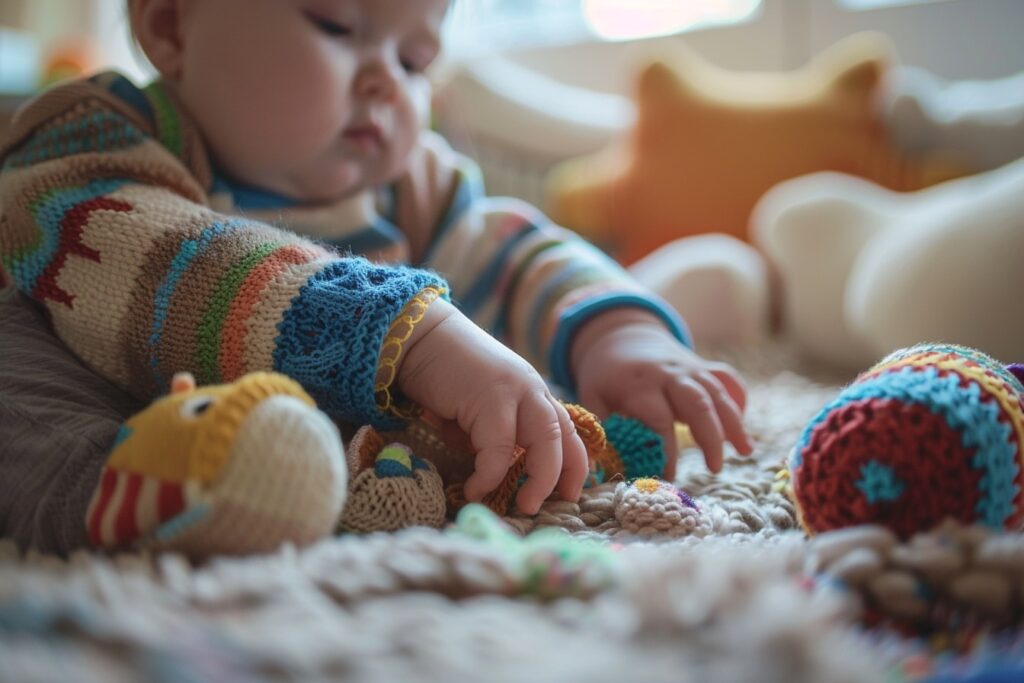Table of Contents
ToggleUnlocking Your Baby’s Potential: A Guide to Montessori Sensory Baskets and Treasure Baskets
Inspiring and Intriguing Introduction:
Picture this: it’s a quiet afternoon, and your baby is nestled in your arms, gazing up at you with wide, curious eyes. As a new parent, you’re filled with a sense of wonder and responsibility, eager to provide the best possible start for your little one’s journey through life.
In the whirlwind of parenthood, amidst the sleepless nights and diaper changes, there’s a magical realm waiting to be discovered—one that taps into your baby’s innate curiosity and thirst for exploration. It’s the world of Montessori sensory baskets and treasure baskets, where simple objects become tools for learning, discovery, and growth.
Montessori education, with its emphasis on independence and hands-on learning, has captivated parents around the globe for decades. At its heart lies a profound belief in the potential of every child to learn and thrive in an environment that nurtures their natural curiosity.
Now, imagine bringing this philosophy into your own home, infusing your baby’s surroundings with opportunities for sensory exploration and discovery. That’s exactly what Montessori sensory baskets and treasure baskets offer—a gateway to a world of wonder and possibility right at your fingertips.
In this guide, we’ll delve into the enchanting realm of Montessori-inspired parenting, exploring how sensory baskets and treasure baskets can unlock your baby’s potential and set them on a path of lifelong learning and discovery.
So, grab a cup of tea, settle into your favorite chair, and let’s embark on this journey together—a journey filled with joy, discovery, and the endless possibilities of childhood.
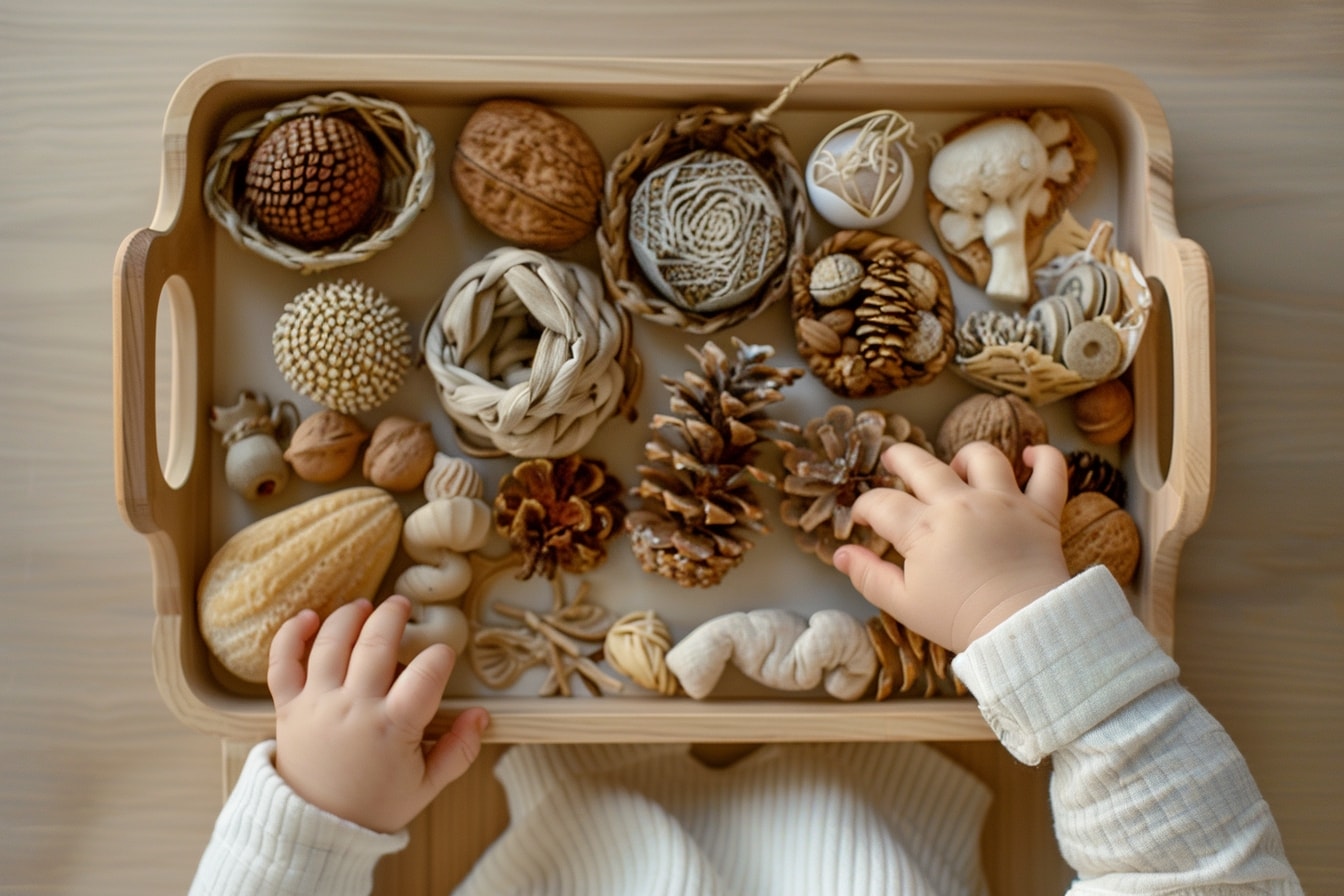
Understanding Montessori Sensory Baskets
Step into the world of Montessori education, and you’ll find a treasure trove of innovative ideas designed to spark curiosity and foster independence in young learners. At the heart of this educational philosophy lies the concept of sensory exploration—a belief that children learn best when they engage all their senses in the learning process.
Montessori sensory baskets are a tangible expression of this philosophy, offering babies and young children a hands-on way to explore the world around them. But what exactly are sensory baskets, and how do they fit into the Montessori approach to education?
Imagine a basket filled with an array of objects—some smooth, some rough, some shiny, some soft. These objects are carefully selected to engage a child’s senses—touch, sight, sound, smell, and even taste. From wooden blocks to fabric scraps, natural materials to everyday household items, each object invites exploration and discovery.
But sensory baskets are more than just a collection of random objects. They are thoughtfully curated to match a child’s developmental stage and interests, providing age-appropriate opportunities for learning and growth. For infants, sensory baskets may include items with contrasting textures or gentle sounds, while toddlers may be drawn to objects that encourage imaginative play and problem-solving.
So, why are sensory baskets such a powerful tool for learning? It all comes down to the way children’s brains are wired. From the moment they are born, babies are constantly absorbing information from their surroundings, using their senses to make sense of the world. By providing them with opportunities for hands-on exploration, sensory baskets stimulate neural pathways, laying the foundation for future learning and development.
But perhaps the most remarkable aspect of sensory baskets is their ability to foster independence and autonomy in young children. Unlike traditional toys or games, which often come with instructions or predetermined outcomes, sensory baskets allow children to explore at their own pace, following their interests and curiosity wherever they may lead.
As Maria Montessori once said, The hands are the instruments of man’s intelligence. By giving children the freedom to touch, manipulate, and explore objects in their environment, sensory baskets empower them to become active participants in their own learning journey.
In the next section, we’ll delve deeper into the art of creating engaging sensory baskets for your baby, exploring how to select the perfect materials and design a sensory-rich environment that fosters exploration and discovery.
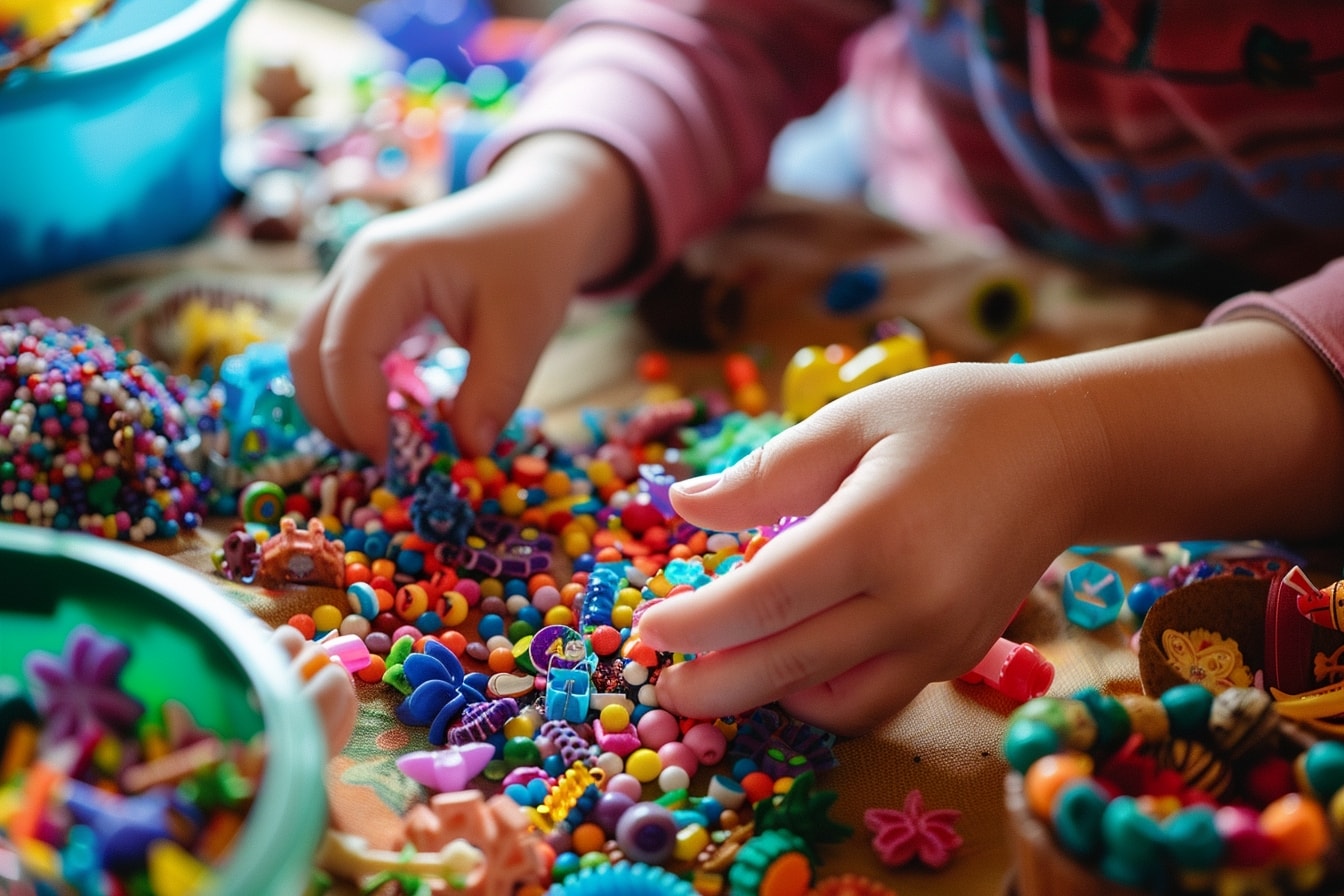
Creating Engaging Treasure Baskets
Picture a world where everyday objects become portals to adventure, where a simple basket holds the key to endless exploration and discovery. Welcome to the enchanting realm of treasure baskets—a cornerstone of Montessori-inspired play that captivates the imagination and ignites the senses.
But what exactly is a treasure basket, and how can you create one that captivates your baby’s interest and sparks their curiosity?
At its core, a treasure basket is a curated collection of objects carefully chosen to stimulate a child’s senses and foster imaginative play. Unlike traditional toys, which often come with predetermined uses or functions, the items in a treasure basket are open-ended, inviting children to explore and experiment in their own unique way.
So, what makes a good treasure basket? It’s all about variety and texture. Think of it as a sensory smorgasbord, filled with objects that engage your baby’s sense of touch, sight, sound, and even taste. From natural materials like wooden blocks and seashells to everyday household items like measuring cups and fabric scraps, the possibilities are endless.
But don’t feel overwhelmed by the choices—creating a treasure basket is as much about intuition as it is about strategy. Pay attention to your baby’s interests and developmental stage, selecting items that align with their emerging skills and curiosities. And don’t be afraid to think outside the box—sometimes the most unexpected objects can become the biggest treasures.
As you gather your items, consider the sensory experiences they offer. Smooth stones, textured fabrics, and rattling toys all provide different sensations for your baby to explore. Mix and match colors, shapes, and sizes to create a visually stimulating environment that captures your baby’s attention and encourages exploration.
But perhaps the most magical aspect of treasure baskets is the way they invite imaginative play. Unlike toys with predetermined functions, the objects in a treasure basket can be anything your baby imagines them to be—a wooden block becomes a spaceship, a seashell becomes a magical treasure, and a silk scarf becomes a cape for a brave adventurer.
So, let your creativity run wild as you curate your baby’s treasure basket, infusing it with objects that inspire wonder and delight. And remember, the true treasure lies not in the objects themselves, but in the joy and curiosity they awaken in your little one’s heart.
In the next section, we’ll explore some common challenges parents may encounter when introducing treasure baskets to their babies, and offer practical solutions to ensure a smooth and enriching play experience.
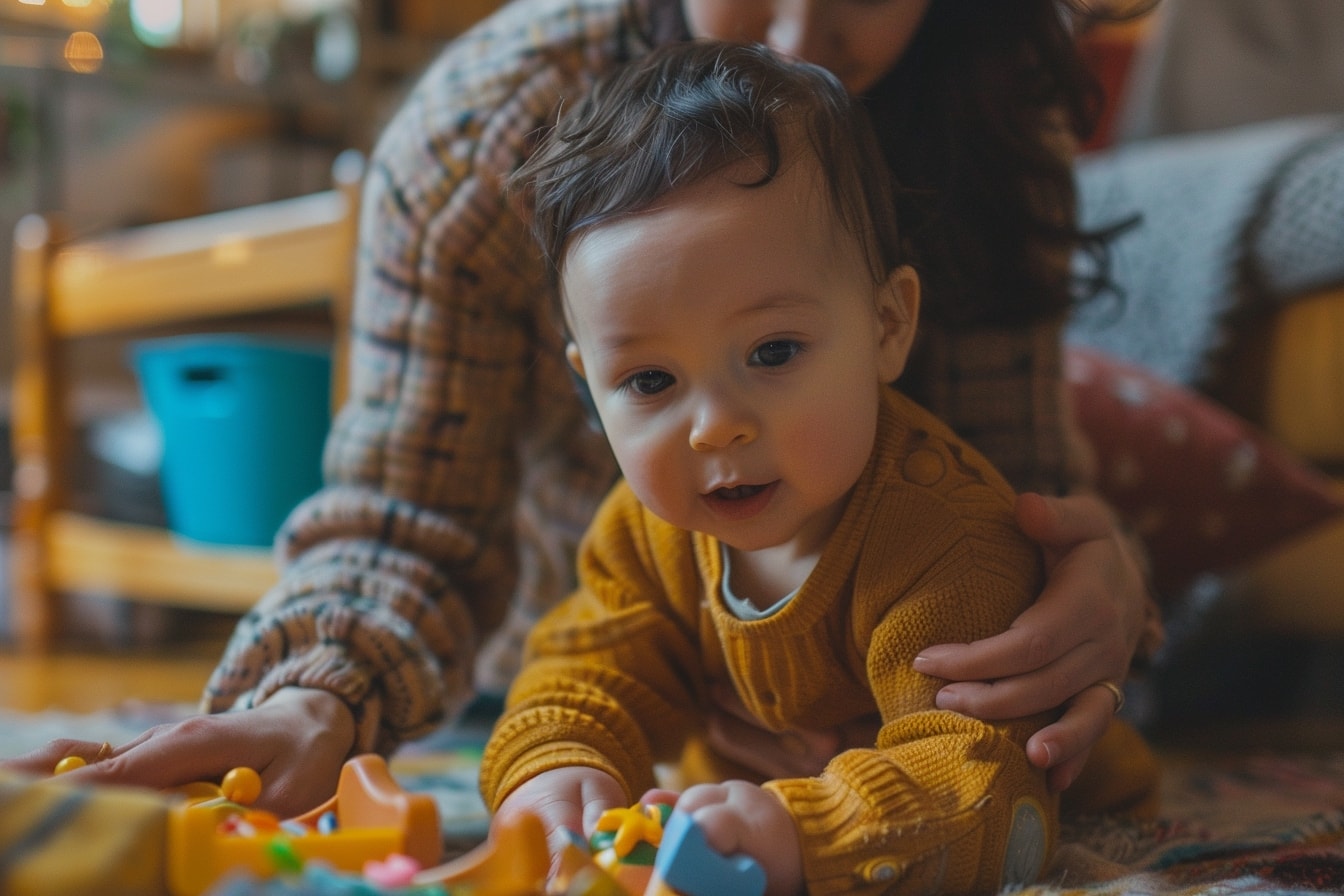
Addressing Common Challenges
Embarking on the journey of Montessori-inspired parenting is a thrilling adventure filled with boundless possibilities. However, like any great journey, it’s not without its challenges. As you introduce treasure baskets to your baby, you may encounter obstacles along the way. But fear not, dear reader, for every challenge presents an opportunity for growth and discovery.
One common challenge parents face when introducing treasure baskets is resistance from their baby. You may find that despite your best efforts to curate a captivating collection of objects, your little one shows little interest or even outright rejects the treasure basket.
But before you despair, consider this: resistance is often a sign of unfamiliarity rather than disinterest. Your baby may simply need time to acclimate to the new sensory experiences offered by the treasure basket. Start by introducing the basket in short, supervised sessions, allowing your baby to explore at their own pace. Over time, as they become more familiar with the objects and sensations, you may find their curiosity begins to blossom.
Another challenge parents may face is the dreaded boredom factor. You may notice that your baby loses interest in the treasure basket after only a few minutes of play, leaving you feeling discouraged and unsure of how to keep them engaged.
But fear not, for boredom is a natural part of the learning process. Just as adults grow weary of repetitive tasks, babies too crave variety and stimulation. To combat boredom, try rotating the objects in your treasure basket regularly, introducing new items and textures to keep your baby’s interest piqued. You may also consider incorporating items from nature, such as pinecones or leaves, to add an element of surprise and wonder to your baby’s play.
Lastly, some parents may struggle with the challenge of safety concerns when it comes to selecting objects for the treasure basket. With babies notorious for putting everything in their mouths, it’s natural to worry about choking hazards or toxic materials.
But fret not, for with careful selection and supervision, you can create a safe and enriching play environment for your baby. Avoid small objects that pose a choking risk, opting instead for larger items that are too big to swallow. Stick to natural materials whenever possible, avoiding plastics or other potentially harmful substances. And always supervise your baby during playtime, intervening if you notice any signs of distress or discomfort.
By addressing these common challenges head-on, you can navigate the world of treasure baskets with confidence and creativity. Remember, every obstacle you overcome is an opportunity to strengthen your bond with your baby and foster their love of exploration and discovery.
In the next section, we’ll delve into the transformative power of sensory play and its myriad benefits for your baby’s development and growth.
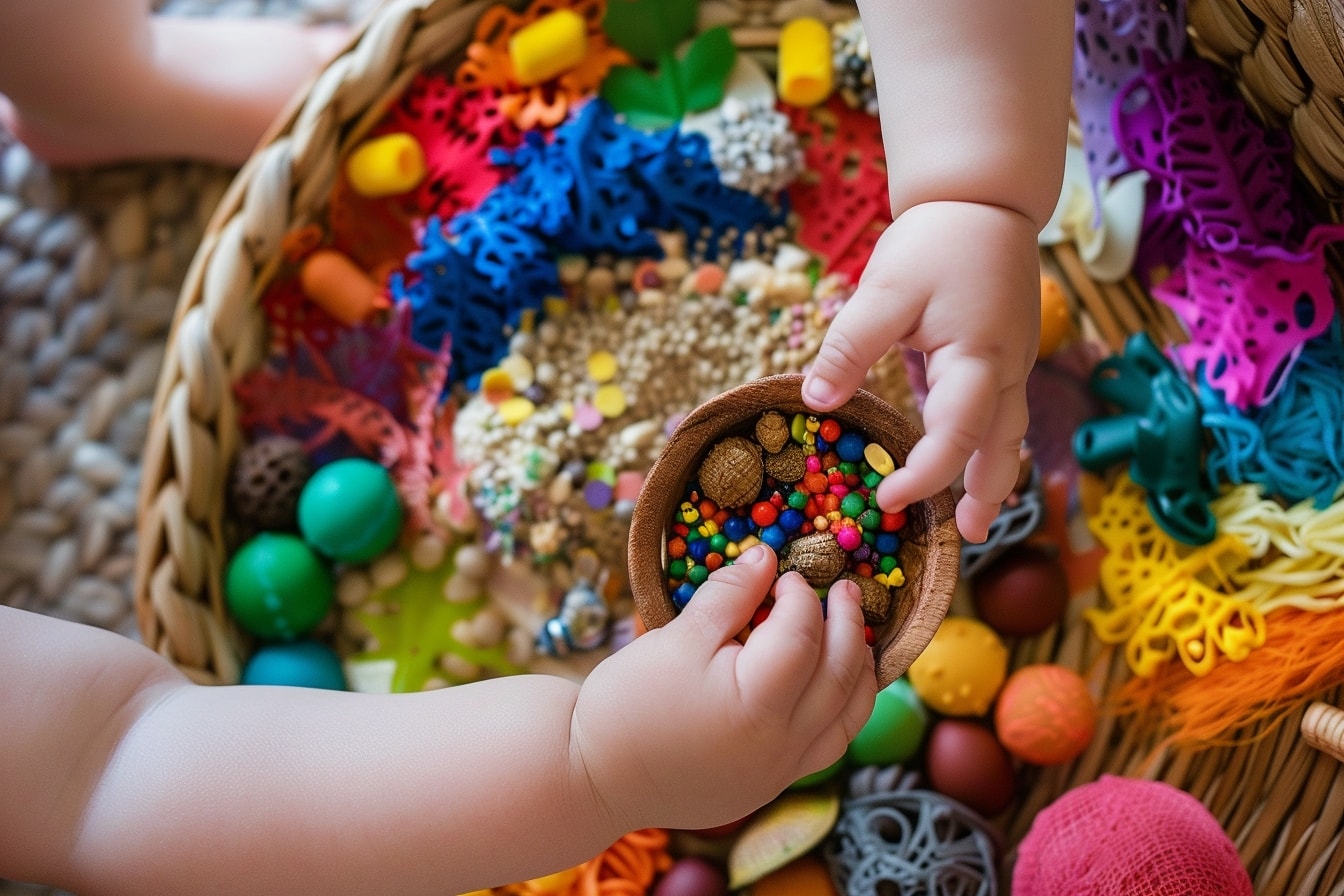
Harnessing the Power of Sensory Play
Close your eyes for a moment and imagine the world through the eyes of a baby. Every sight, sound, and sensation is a new and wondrous experience, waiting to be explored and savored. Now, open your eyes and step into the magical realm of sensory play—a world where ordinary objects become extraordinary tools for learning and discovery.
But what exactly is sensory play, and why is it so important for your baby’s development?
At its core, sensory play is a hands-on, interactive way for babies to engage with their environment and explore the world around them. It involves stimulating the senses—touch, sight, sound, smell, and taste—through a variety of activities and materials, from squishing playdough between their fingers to splashing in a tub of water.
But sensory play is more than just fun and games—it’s a critical component of your baby’s development. Research has shown that engaging the senses in early childhood can have profound effects on brain development, laying the foundation for future learning and cognitive abilities.
For example, when your baby reaches out to touch a soft fabric or listens to the sound of a rattle, they are not only exploring the world around them but also building crucial neural connections in their brain. These connections form the basis for skills like language development, problem-solving, and spatial awareness.
But the benefits of sensory play extend far beyond cognitive development. It also plays a crucial role in social and emotional growth, helping babies learn to regulate their emotions, communicate their needs, and form bonds with caregivers.
Imagine, for instance, the joy and laughter that fills the room as you and your baby engage in a sensory activity together. Through shared experiences like these, your baby learns to trust and connect with you, laying the groundwork for healthy relationships and social interactions later in life.
But perhaps the most magical aspect of sensory play is its ability to spark creativity and imagination in young minds. When your baby explores a treasure basket or engages in a sensory activity, they are not simply passively absorbing information—they are actively constructing meaning, making connections, and weaving stories in their minds.
So, how can you harness the power of sensory play to enrich your baby’s life?
Start by creating a sensory-rich environment in your home, filled with objects and materials that stimulate your baby’s senses. From soft fabrics and textured toys to musical instruments and natural materials, the possibilities are endless. Follow your baby’s lead, observing their reactions and preferences, and tailoring their play experiences to match their interests and developmental stage.
And remember, sensory play is not just for babies—it’s for parents too. So, roll up your sleeves, get down on the floor, and immerse yourself in the joy and wonder of sensory exploration alongside your little one. Together, you’ll embark on a journey of discovery and delight, forging bonds that will last a lifetime.
In the next section, we’ll explore some practical ways to incorporate sensory play into your daily routine, from simple DIY activities to outdoor adventures that engage all five senses.
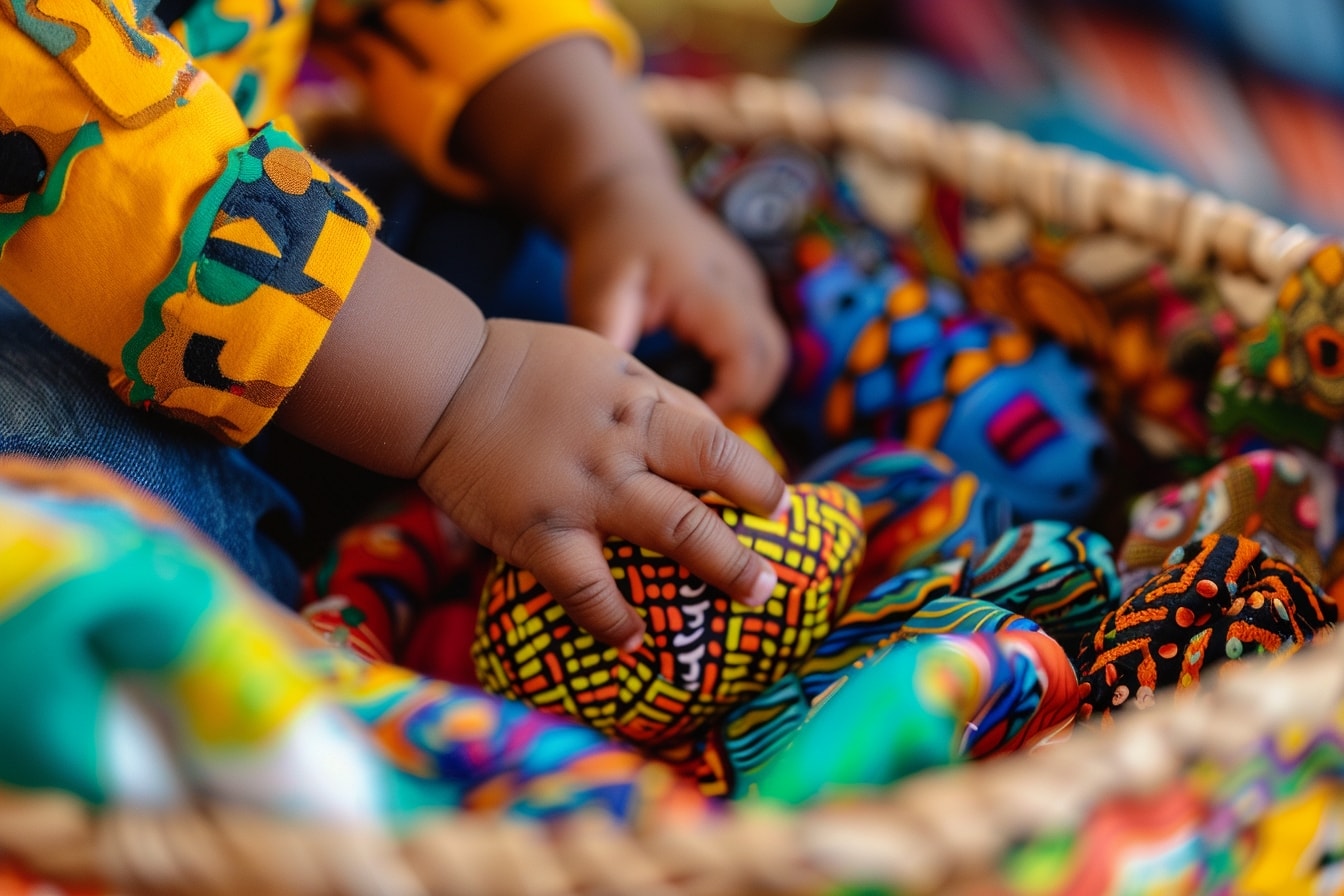
Incorporating Cultural Elements
Close your eyes and let your mind wander to the warm, vibrant shores of the Caribbean—the rhythmic beat of steel drums, the scent of tropical flowers, the taste of ripe mangoes dripping down your chin. Now, imagine infusing these rich cultural experiences into your baby’s world, creating a sensory tapestry that celebrates their heritage and ignites their imagination.
But how exactly can you incorporate Caribbean culture into your baby’s sensory experiences, and why is it important?
At its core, culture is the fabric that weaves together the tapestry of human experience—it shapes our beliefs, values, and traditions, and influences the way we see the world. By exposing your baby to their cultural heritage from a young age, you not only celebrate their roots but also lay the foundation for a strong sense of identity and belonging.
So, where do you begin?
Start by exploring the sights and sounds of the Caribbean through sensory materials that reflect its vibrant culture. Consider incorporating items like seashells, beach sand, and tropical fruits into your baby’s treasure baskets, providing opportunities for tactile exploration and sensory stimulation.
But don’t stop there—let your creativity soar as you infuse Caribbean motifs and themes into your baby’s play environment. Hang colorful tapestries or paintings depicting scenes from island life, play traditional Caribbean music or lullabies during quiet moments, and introduce your baby to Caribbean-inspired stories and folktales that celebrate the rich diversity of the region.
And don’t forget about the culinary delights of the Caribbean—introduce your baby to the flavors and aromas of traditional Caribbean cuisine, from savory jerk chicken to sweet coconut treats. Encourage them to explore new tastes and textures, embracing the sensory experience of trying new foods and flavors.
But perhaps the most powerful way to incorporate Caribbean culture into your baby’s sensory experiences is through personal connections and traditions. Share stories of your own upbringing in the Caribbean, recounting fond memories of family gatherings, festive celebrations, and cherished traditions passed down through generations.
Invite extended family members to join in the fun, sharing their own cultural traditions and experiences with your baby. Whether it’s teaching them how to dance to the rhythms of calypso music or weaving palm fronds into intricate patterns, these shared experiences create lasting memories and deepen your baby’s connection to their cultural heritage.
By infusing Caribbean culture into your baby’s sensory experiences, you not only celebrate their roots but also provide a rich tapestry of experiences that will shape their identity and worldview for years to come. So, embrace the warmth, vibrancy, and diversity of Caribbean culture, and watch as your baby’s world comes alive with color, rhythm, and joy.
In the next section, we’ll explore some practical ways to incorporate these cultural elements into your daily routine, from festive celebrations to everyday activities that celebrate the rich tapestry of Caribbean life.
As we reach the end of our journey through the enchanting world of Montessori sensory baskets and treasure baskets, take a moment to reflect on the wonders we’ve uncovered together. From the soothing touch of a silky scarf to the joyful laughter of a baby exploring a treasure basket, we’ve witnessed the transformative power of sensory play in action.
But our journey doesn’t end here—it’s just the beginning of a lifelong adventure in Montessori-inspired parenting. Armed with the knowledge and inspiration gleaned from our exploration, you’re now equipped to embark on your own journey of discovery with your little one by your side.
So, what’s next?
Start by creating your own sensory-rich environment at home, filled with treasures that captivate your baby’s imagination and ignite their senses. Follow their lead, observing their reactions and preferences, and adapting your play experiences to match their interests and developmental stage.
But don’t stop there—infuse your baby’s world with the warmth and vibrancy of Caribbean culture, celebrating their heritage and fostering a strong sense of identity and belonging. Share stories of your own upbringing, invite family members to join in the fun, and embrace the rich tapestry of experiences that make up your baby’s world.
And above all, remember that the true treasure lies not in the objects themselves, but in the moments of connection and joy you share with your little one along the way. Whether it’s watching them discover the world around them for the first time or sharing a quiet moment together as you explore a treasure basket, these are the moments that make parenthood truly magical.
So, as you continue on your journey as a Montessori-inspired parent, may you find joy in the everyday moments, wonder in the simple pleasures, and love in the connections you share with your precious little one. And may the spirit of curiosity, exploration, and adventure guide you every step of the way.
Thank you for joining me on this journey, and may your days be filled with laughter, love, and the boundless possibilities of childhood.
Want to take your knowledge to the next level? Check out these must-read articles:
- How to involve your baby in daily tasks and routines with Montessori
- How to help your baby develop selfcare skills with Montessori
Organize your baby’s wardrobe with our baby clothes closet organizer products! Our organizers are designed specifically for baby clothes. Get your baby’s clothes neat and tidy with our selection of organizers – shop now!
Step into Sue Brown's World of Baby Care, where you'll find a treasure trove of knowledge and wisdom waiting to be explored. Sue's dedication to providing accurate and up-to-date information on baby care shines through in every article, blog post, and resource she shares. From newborn essentials to sleep training tips, breastfeeding advice to nurturing your baby's development, Sue covers a wide range of topics that are essential for every parent to know. Her warm and compassionate approach creates a sense of community and reassurance, making her website a safe haven for parents seeking guidance and support. Let Sue Brown be your partner in this beautiful journey of parenthood, as she empowers you to create a loving, nurturing, and thriving environment for your little one.
- Indoor Air Quality for Infant Respiratory Health - October 20, 2025
- Positive Discipline Foundations: Setting the Stage From Infancy - October 18, 2025
- 2025’s Most Innovative Baby Products Worth the Investment - October 16, 2025
Other Great Posts:
- How to use growth mindset principles to improve your baby’s health and wellbeing, such as eating well, sleeping well, and exercising regularly
- Adapting to Change: Teaching Flexibility to Your Baby
- Toys That Encourage a Growth Mindset in Babies
- How to foster your baby’s freedom of movement and motor skills

